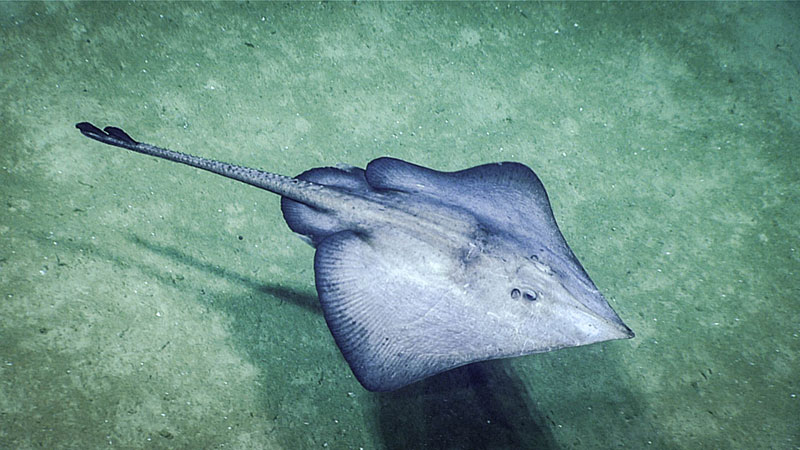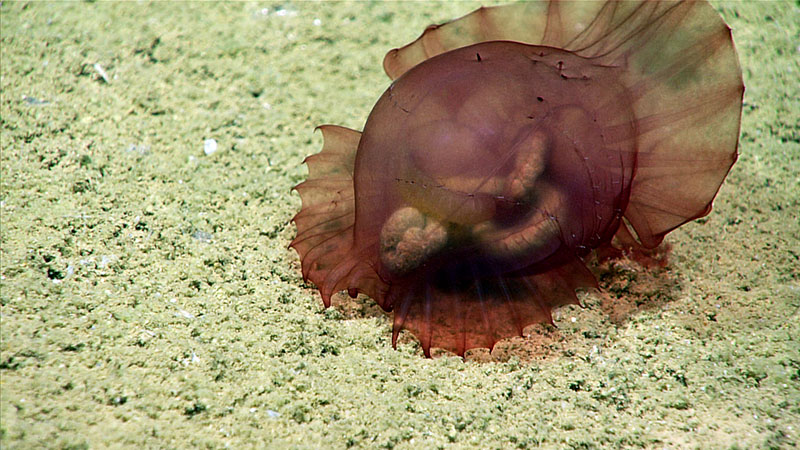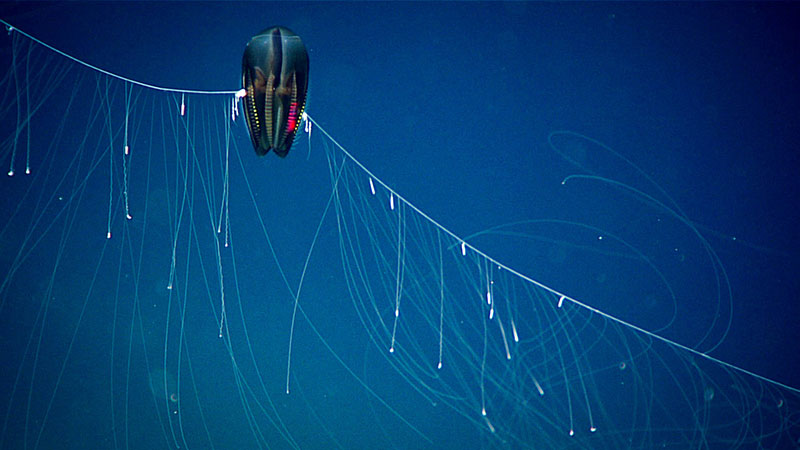Dive 03 targeted an unnamed ridge in an area of the Western Gulf of Mexico that had never before been explored using deep-sea submersibles. The dive was submitted by Dr. Heather Ollins of Boston College and her marine biology class, reviewed by the science community, and selected by participating scientists as a dive site for this expedition. The hope was to find hard substrate and associated biological communities. The closest historical dives to the site were four surveys by Human Occupied Vehicle Alvin in 2010, which were conducted over 35 kilometers (22 miles) to the east in Orca Basin.
The remotely operated vehicle (ROV) touched bottom in a flat, heavily sedimented area area at ~1,565 meters (~5,135 feet). One of the first observations was marine debris, a plastic bag with anemones growing on it. The ROV moved south-southeast up the flank of a ridge. The bottom composition was almost exclusively fine-grained sediment with bioturbation (low mounds with holes created by organisms) for the entirety of the dive. Lower portions of the ridge crest exhibited linear sediment ripples indicating persistent current movement approximately perpendicular to the ridge axis; however, the ROV pilot noted that the bottom currents were moving to the northwest. The ROV traveled to ridge crest then followed it to the west, reaching the ridge’s maximum elevation of ~1,460 meters (4,790 feet). There were very few rocks, one had an attached barnacle and another had an attached anemone. Some of the most commonly observed species included a brown tube-dwelling anemone (ceriantharian), shrimp (Nematocarcinus ensifer), several holothurians (including the free swimming Enypniastes eximia), halosaurs (Aldrovandia gracilis), and tripod fishes (Bathypterois phenax and Ipnops murrayi).
Other species observed included cusk eels (both Cataetyx laticeps and Dicrolene sp.), squat lobsters – one was observed on a sea star (Nymphaster arenatus), isopods, and the red crab (Chaceon quiquedens). Patches of Sargassum seaweed, some with bryozoans growing on them, were also observed. A single sea pen and a single sponge were also surveyed. Multiple ctenophores were observed in the water column just above the seafloor. A male skate (Fenestraja sp.) with attached parasitic isopod gave us a couple of opportunities to collect high-quality images. ROV Deep Discoverer finished the dive at the top of the ridge at ~1,457 meters (~4,780 feet) deep.


